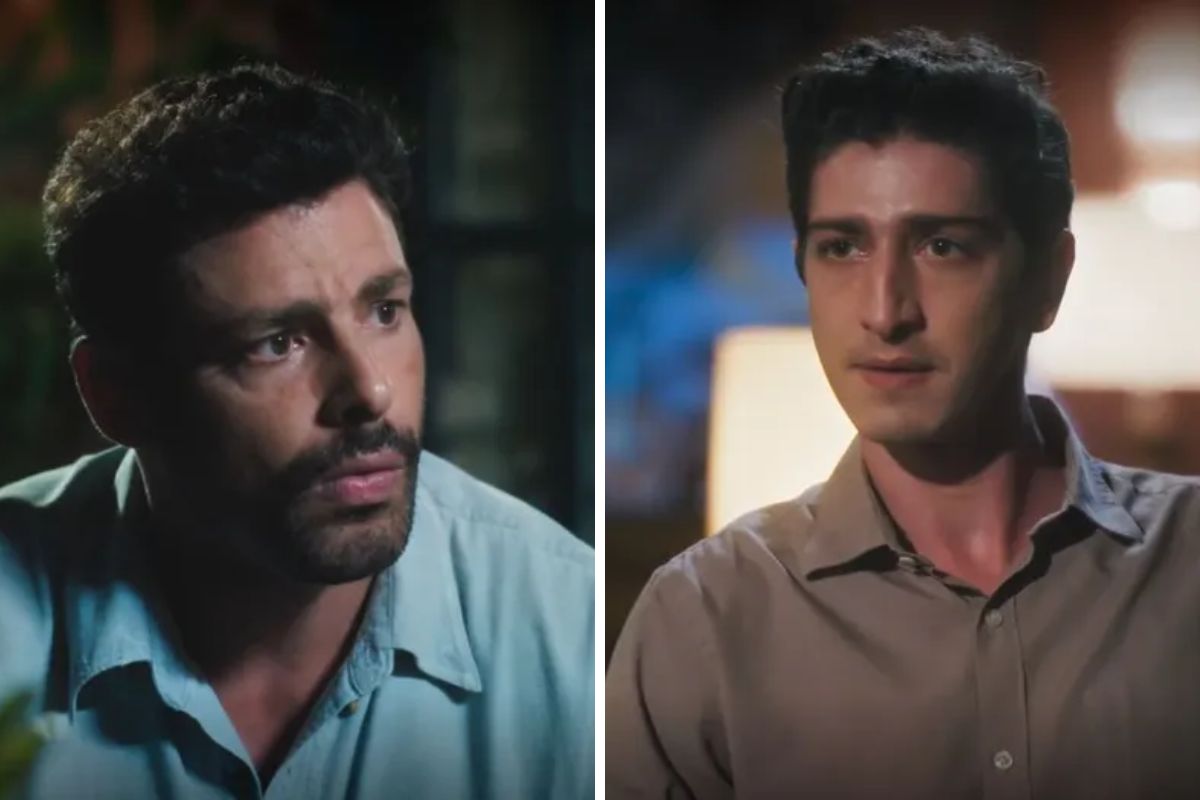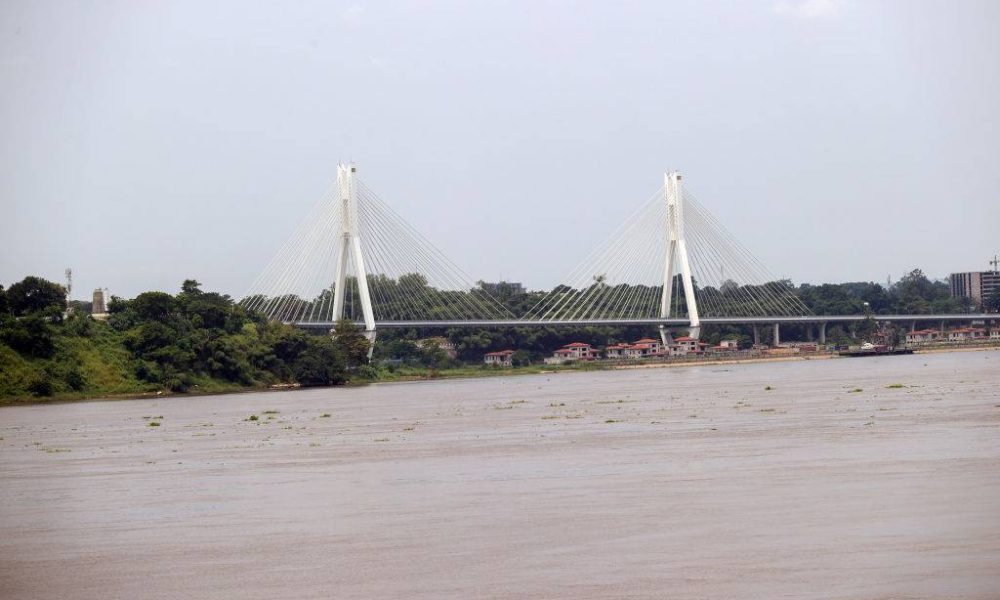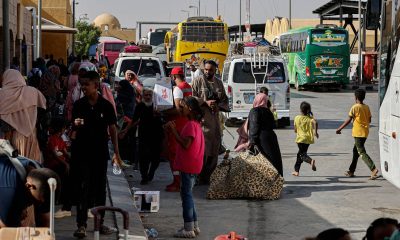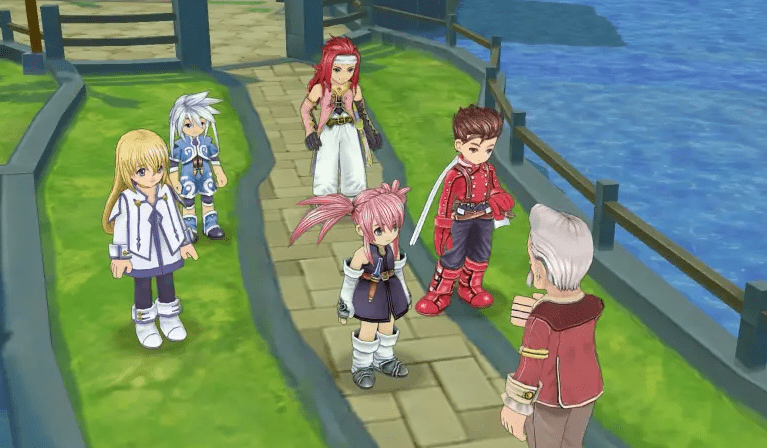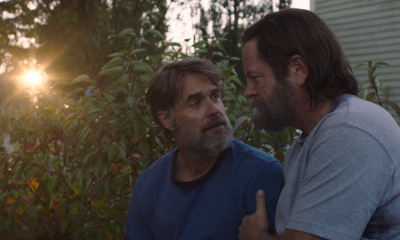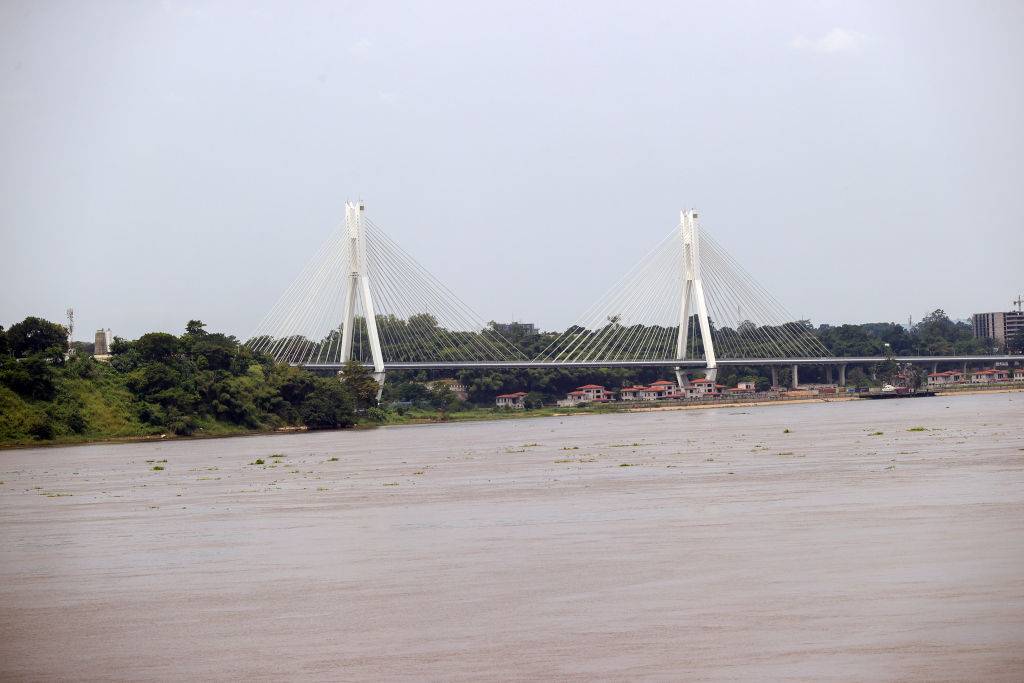
DRC’s riverside capital running on scarce and dirty water
Follow Us @
DRC’s riverside capital running on scarce and dirty water

riverside capital
Congo River and bridge are seen in Kinshasa, Democratic Republic of Congo. (Photo by Halil SaÄirkaya/Anadolu Agency via Getty Images)
MOst mornings, Ariette Oto clambers up a winding, precipitous path to the top of a ravine on the periphery of the Democratic Republic of the Congo’s sprawling capital.
There, the mother of five fills her 25-litre jerrycan with water, pays 150 Congolese francs (six US cents) and hauls the precious load back home.
Just a short distance away is the mighty Congo River, Africa’s second-largest, and Kinshasa is buffeted by torrential rains for eight months of the year.
But for many in this rapidly growing megacity of an estimated 15 million people, running water that is safe to drink is a rarity. Oto pointed to the other side of the valley, where she says there was a tap operated by the state water utility, Regideso. (riverside capital )
“Sometimes the tap has water,” she said. “If that happens, we all team up and go there.”
The trek for water is a daily burden for people living in the neighborhood of Selembao.
The problem is particularly acute on the outskirts — vast swathes of the city that are almost completely cut off from public services and resemble densely populated villages.
“There are wells but finding water to drink is very difficult,” says Pierre Mafula, who moved to Selembao more than a decade ago and lives at the bottom of a ravine. “It’s dirty water. It’s got amoeba.”
Rapid population growth and a failure of public utilities to keep up is driving the water shortages. And the situation appears to be getting worse. About 90% of households in the city had access to piped water in 2014, according to the World Bank. That proportion fell to 72% in 2018.
“Before 2010, water production was enough to cover the needs of the whole city,” said Patrick Goy Ndolo, a senior water and sanitation specialist at the World Bank’s Kinshasa office.
And the running water that is available may well pose a health risk. More than half of the piped water in Kinshasa is infected with E coli, according to United Nations data.
“It’s very bad,” says Alphonse Mbela Peko, a resident of Selembao.
The privately-owned well near his home pumps water from just one meter below the surface. He says it’s not drinkable.
Peko travels up to five kilometers to fetch water from a stream, but even then says it’s easy to contract typhoid.
The government has opened two new water plants in Kinshasa in as many years in a bid to fix the problem.
With the latest opening in February, President Felix Tshisekedi’s office even declared victory over what he termed as the “water war”.
“We’ve doubled the capacity compared with five years ago,” said Giscard Kusema, the deputy director of communications in the president’s office. But despite the efforts, swathes of Kinshasa remain unserved.
Selembao, a neighborhood of erosion-prone gullies and trash-strewn streets, is a textbook example of the difficulties that follow a population boom.
About 757 000 people out of 777 000 living in the neighborhood originally come from outside of Kinshasa, according to a report by capital authorities this year. And only 0.6% of the residents are signed up to Regideso.
The fallback is private wells, which are often built cheaply. (riverside capital )
Gautier Dianzitu Kulu-Kimbembe, who runs a nonprofit that builds wells in Selembao, said Regideso once served the entire community. But runaway construction linked to population growth — and landslides driven by erosion — had damaged the network.
“People are left to fend for themselves, forced to walk for kilometers to fetch water,” Kulu-Kimbembe said. “It’s mainly women and children who suffer”.
Neither Regideso nor the DRC’s hydraulic resources ministry responded to requests for comment. — AFP
DRC’s riverside capital running on scarce and dirty water
Follow AFRILATEST on Google News and receive alerts for the main news about trending game reviews, Anime, series, entertainment and lots more!
SHARE POST AND EARN REWARDS:
Join our Audience reward campaign and make money reading articles, shares, likes and comment >> Join reward Program
FIRST TIME REACTIONS:
Be the first to leave us a comment, down the comment section. click allow to follow this topic and get firsthand daily updates.
JOIN US ON OUR SOCIAL MEDIA: << FACEBOOK >> | << WHATSAPP >> | << TELEGRAM >> | << TWITTER >
#DRCs #riverside #capital #running #scarce #dirty #water
-

 Fashion3 months ago
Fashion3 months agoVogue Arabia cover welcomes Salma Hayek in an interview with Penélope Cruz
-

 Football3 months ago
Football3 months agoVAR points out Diego Costa's offense against the fourth referee
-

 USA today entertainment3 months ago
USA today entertainment3 months agoBeyonce with the single “Break My Soul” leads on Spotify Brazil
-

 Health and Fitness3 months ago
Health and Fitness3 months agoVaccine against the reappearance of skin cancer enters final testing phase
-

 USA today entertainment3 months ago
USA today entertainment3 months agoSZA, Future and DJ Khaled come together in collaboration
-

 News3 months ago
News3 months agoParents of former player Waleswska are pressured by widower to pay rent for the house where they live
-

 USA today entertainment3 months ago
USA today entertainment3 months agoLarissa Luz and Linn da Quebrada enchant at the Multishow Awards with a tribute to Elza Soares.
-

 Good News TV series3 months ago
Good News TV series3 months agoThe shocking reason behind the decision not to show dead characters in The Last Of Us episode revealed











